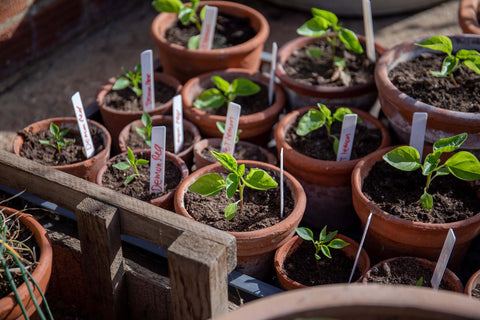Annual cosmos must be among the easiest of summer flowering annuals to grow from seed. With their lovely, soft, feathery foliage and showy single or double flowers in white and pink, purple or even yellow shades, they can bloom profusely and continuously from late June or July until the first frosts of autumn.
They are good plants for children to try growing as they develop quickly. With bushy growth to around 1.2m (4ft) tall, they are ideal for filling gaps in sunny borders or even growing in containers, so long as they have fertile, moist soil. Unwins supplies a range of cosmos as seed, bringing a large choice of colour to your garden.
Try cosmos ‘Razmatazz’ for striking semi-double flowers or amazing ‘Xanthos’ for soft yellow blooms. ‘Cosmonaut’ is a semi-double white while ‘Fizzy Rose Picotee’ has delicate single white flowers edged in rose-pink.

Clockwise from top-left: Razmatazz, Xanthos, Cosmonaut, Fizzy Rose Picotee
When to sow
Sow cosmos seed indoors between March and April for the longest flowering season; plants should begin to bloom from late June or July and will continue until the frosts. Plants can also be direct-sown outdoors but will start to flower later.
How to sow
- Fill a cell seed tray with John Innes Seed Sowing Compost or Gro-Sure Seed and Cutting compost.
- Drop one cosmos seed in each cell, covering them with about 3mm of compost, and water-in well.
- Place the tray into a clear polythene bag and move to a warm place at 15 - 25°C such as a greenhouse or warm window sill. Alternatively use a heated propagator. This will aid germination which happens quickly, after about a week.

Next steps
- Prick out seedlings once they have a pair of true leaves (not the undivided ‘seed leaves’, but delicate fern-like foliage), carefully lifting them with their roots from each cell and potting individually into a 7cm pot. Water well and stand on a window sill or put into a frost-free greenhouse or cold frame.
- Once plants have 3-4 pairs of leaves, pinch out the growing tip of each stem. This seems scary but is the key to getting bushy plants that flower well. Simply squeeze the growing tip off between your finger and thumb.
- Harden plants off gradually by standing them outside on mild days, then bringing back inside at night. Do this for a couple of weeks.
- Cosmos plants can be planted out in the garden when the danger of frost has passed, usually around May. Choose a sunny spot, and enrich soil by digging in farmyard manure, Plant cosmos 30 to 45 cm (12-15 inches) apart. If your garden is in a windy location, stake and tie the plants. Normally however, plants are sturdy enough to self-support.
- Water and feed plants regularly through the growing season with liquid feed to keep the floral display going. Deadhead plants regularly.
Deadheading
Deadheading regularly will help cosmos to bloom for longer. A good tip for deadheading cosmos is not to just take the flower head off, but cut the stem right back to the first leaf below the flower head.
Common problems, pests & diseases
The most delicate stage is when plants have just been bedded out – at this stage they are likely to be attacked by slugs and snails, so take precautions. Plants will stop flowering if not deadheaded. They don’t suffer many other problems.
Frequently Asked Questions
Why are my plants thin and leggy? To get the best and most beautiful plants, you need to pinch then out and grow them in sun, feeding and watering regularly.
Will my cosmos come back next year? Cosmos grown from seed are usually annuals (lasting for one season) which means they will not re-grow in spring unless you start them again from seed.
Can I save seed from my cosmos flowers to sow next year? You can but it is not recommended. The plants produced will not be the same – they may have different flower sizes and colours.
Back to Learn & Grow

